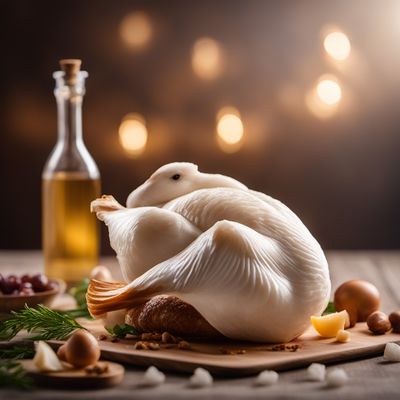
Ingredient
Ratites fresh fat tissue
The Unique Fat of Ratites
Ratites, including ostriches and emus, have a specialized type of fat tissue that differs from traditional animal fats. This fat is low in saturated fat and cholesterol, making it a healthier alternative. It has a mild flavor and a creamy, buttery texture, making it a versatile ingredient in both sweet and savory dishes.
Origins and history
Ratites are native to various regions around the world, including Africa, Australia, and South America. They have a long history of being hunted and utilized by indigenous cultures for their meat, eggs, and fat. In recent years, ratite farming has gained popularity, providing a sustainable source of these unique ingredients.
Nutritional information
Ratites' fresh fat tissue is a good source of monounsaturated fats, which can help reduce bad cholesterol levels and promote heart health. It is also lower in saturated fat compared to traditional animal fats. Incorporating ratite fat into your cooking can add richness and flavor while keeping your dishes healthier.
How to select
When purchasing ratite fat tissue, look for products that are fresh and free from any off odors or discoloration. The fat should be creamy white in color and have a smooth, firm texture. If buying rendered fat, ensure it is free from any impurities or particles. Store in the refrigerator and use within the recommended expiration date.
Storage recommendations
To maintain the freshness and quality of ratite fat tissue, store it in an airtight container in the refrigerator. It can also be frozen for longer-term storage. Ensure that the fat is protected from exposure to air and light, as these can cause rancidity. Use within the recommended expiration date for the best results.
How to produce
Ratites, such as ostriches and emus, can be raised on specialized farms under controlled conditions. However, due to the unique nature of ratite farming, it is recommended to consult with experts or experienced farmers for detailed guidance on the production process.
Preparation tips
Ratite fat tissue can be used as a substitute for traditional animal fats in various recipes. It can be rendered and used for frying, sautéing, or as a spread on bread or toast. The mild flavor and creamy texture make it a great addition to both sweet and savory dishes. Ratite fat can be used in baking to add moisture and richness to cakes, cookies, and pastries.
Culinary uses
Ratite fat tissue is a unique ingredient that is not commonly used in mainstream culinary practices. However, it can be incorporated into a wide range of dishes, including roasted meats, sautéed vegetables, or even as a base for sauces and dressings. Its mild flavor allows it to complement other ingredients without overpowering them.
Availability
Africa, Australia, South America

